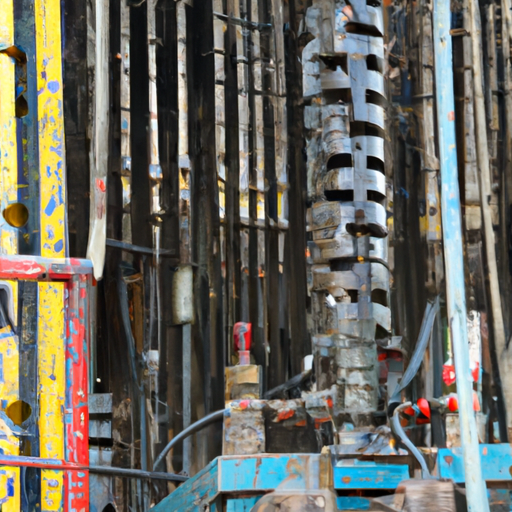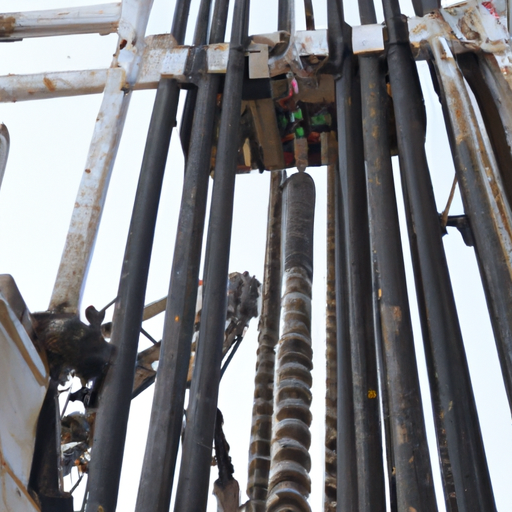Ensuring Safety and Efficiency in the Oil and Gas Industry

Introduction
In the oil and gas industry, safety and efficiency are paramount. The drilling process plays a crucial role in extracting these valuable resources from the earth's depths. To ensure safe and efficient drilling operations, the American Petroleum Institute (API) has established industry standards, including the API 9A drilling line specification. This article dives into the significance of API 9A drilling lines, their characteristics, and their role in enhancing safety and efficiency in the oil and gas industry.
What is API 9A Drilling Line?
API 9A is a specification developed by the American Petroleum Institute to regulate the manufacturing, testing, and use of wire rope used in drilling line applications. Drilling lines are an integral part of the drilling process, responsible for supporting and hoisting the drilling equipment, such as the drill bit, drill string, and other components. API 9A drilling lines are specifically designed to withstand the harsh conditions and extreme loads encountered during drilling operations.
Characteristics of API 9A Drilling Line
1. Strength and Durability: API 9A drilling lines are manufactured using high-quality materials and undergo rigorous testing to ensure their strength and durability. These wire ropes are designed to withstand heavy loads, intense tension, and abrasive environments commonly encountered in drilling operations.
2. Corrosion Resistance: Drilling lines are exposed to various corrosive elements, including drilling fluids and saltwater. API 9A drilling lines are engineered with corrosion-resistant properties to withstand these harsh conditions. This ensures the longevity and reliability of the wire rope, reducing the risk of equipment failure during drilling operations.
3. Fatigue Resistance: The repetitive nature of drilling operations exposes drilling lines to cyclic loading, leading to fatigue. API 9A drilling lines are designed to resist fatigue, allowing them to endure countless cycles of tension and compression without compromising their structural integrity. This reduces the risk of unexpected failures during drilling operations.
4. Flexibility and Bendability: API 9A drilling lines are engineered to exhibit excellent flexibility and bendability characteristics. This allows for easier spooling, installation, and operation of the wire rope on drilling equipment. The flexibility of these drilling lines also ensures smooth and efficient operation during the hoisting and lowering of drilling equipment.
5. Enhanced Abrasion Resistance: Drilling lines often come into contact with rough surfaces and edges, leading to wear and tear. API 9A drilling lines are designed with enhanced abrasion resistance, minimizing damage caused by contact with other equipment or structures. This feature contributes to the overall longevity and safety of drilling operations.
Importance of API 9A Drilling Line in Safety
1. Preventing Accidents: API 9A drilling lines undergo stringent testing and certification processes to ensure their compliance with safety standards. By utilizing these certified drilling lines, operators can minimize the risk of accidents caused by equipment failure or wire rope breakage. This enhances the safety of workers and reduces the likelihood of costly incidents.
2. Load Capacity and Stability: The load capacity of drilling lines is crucial to ensure the safe operation of drilling equipment. API 9A drilling lines are designed to withstand the dynamic loads encountered during drilling, providing stability and preventing catastrophic failures. This ensures the safety of personnel and equipment throughout the drilling process.

3. Reliability and Predictability: API 9A drilling lines are manufactured with consistent quality and undergo rigorous inspection processes. This ensures their reliability and predictability, allowing operators to have confidence in the performance of the wire rope. By using reliable equipment, operators can mitigate potential risks and ensure the safety of all personnel involved.
Enhancing Efficiency with API 9A Drilling Line
1. Improved Performance: The use of API 9A drilling lines contributes to enhanced drilling efficiency. Their high strength and durability allow for increased load capacities, enabling operators to handle larger and heavier drilling equipment. This results in improved drilling performance, higher productivity, and reduced downtime due to equipment limitations.
2. Reduced Maintenance Requirements: API 9A drilling lines are designed to withstand the harsh drilling environments, reducing the need for frequent maintenance and replacement. Their corrosion resistance and fatigue resistance properties ensure longer service life, minimizing downtime and associated costs. This allows for uninterrupted drilling operations, maximizing efficiency and profitability.
3. Compatibility and Standardization: API 9A drilling lines are manufactured in accordance with industry standards, promoting compatibility and standardization across drilling operations. This enables interchangeability of drilling lines and equipment, simplifying logistics and reducing downtime caused by compatibility issues. Standardization also facilitates training and maintenance processes, further improving operational efficiency.
Conclusion
API 9A drilling lines play a critical role in ensuring safety and efficiency in the oil and gas industry. Their strength, durability, corrosion resistance, and fatigue resistance characteristics make them ideal for the demanding conditions encountered during drilling operations. By adhering to these industry standards, operators can mitigate risks, prevent accidents, and improve overall drilling efficiency. Investing in API 9A drilling lines ultimately leads to safer operations, reduced downtime, and enhanced productivity, contributing to the success of the oil and gas industry.




 8613371530291
8613371530291